Toyota IQ
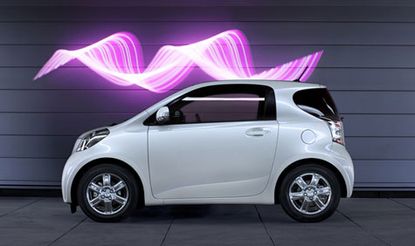
Toyota chose to launch their diminutive iQ city car amongst the glowing shop windows of a wintry Milan. From the initial pick-up at the Villa Malpensa, that perennial launch-pad for press events, rising up incongruously from the flat industrial landscape surrounding the airport, the test route was carefully calibrated to take in both the open autostrada and the cramped cobbled streets of central Milan.
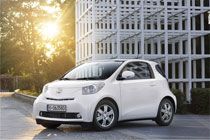
see more images of the IQ as it tackles the Italian streets
In truth, the iQ isn't exactly news, First launched as a concept at the 2007 Frankfurt Auto Show, the design only required minor fettling before it became a production-ready car. Styled at Toyota's French design studio, the iQ is not much of a looker. With its filleted edges and deep scoops, the bodywork looks as if it's been chiseled out of a far larger car. This is where the design dollars have been spent, compacting and rearranging the mechanical underpinnings in order to cram four people into a vehicle that's barely longer than a Smart car.
Once inside the iQ, the perception shifting continues. For a start, the high driving position gives the impression of a far larger machine - you certainly don't feel subservient to almost every road user (at least not in Italy, where common sense continues to prevail when it comes to the size of the average urban automobile). Although we were driving a pre-production model, to all intents and purposes the car resembled the machine you can expect to drive out of European showrooms in January 2009. American readers will have to wait - the iQ might not appear in the land of the supersized automobile for several years.
As we headed north for the lakes, past the region's endless sprawl of light industry and eccentric roadside architecture, the iQ handled the fast-moving autostrada with aplomb. However, despite the snowy, sun-drenched Alps ahead, the open road wasn't really of interest. This is a car that's just three metres long; the city is where it belongs. With that in mind, we were directed into the heart of Milan for a taste of the rush hour. Small and nippy enough to dart into the rare gaps in traffic, our pristine white iQ example was as yet unmarked by the scars of close contact daily commuting, and we suspected that Toyota wanted it to remain that way.
The slippery combination of cobbles and tramlines conspire to make the city's streets a testing place for a small car, but the iQ coped with ease (although go for the manual, rather than the rather hesitant automatic transmission). After a coffee stop at the Park Hyatt on Via Silvio Pellico - helpfully within a couple of car lengths of the freshly-scrubbed Duomo - we were treated to a circuitous route through the shopping district to show off the car's impressive maneuverability (plus the iQ's ability to turn the heads of the city's more discerning individuals).
That evening, the formal press conference attempted to give us a clear picture of the iQ. The car is the result of five years of engineering effort, which, for the benefit of our short attention spans, had been distilled into a series of easy-to-swallow technical factoids. In essence, all you need to know is this; Toyota's engineers have made the iQ's oily bits smaller, leaving more space for human beings. The engineering dispensed with, our hosts moved on to design. The iQ's launch colours are white, black and purple, with soft, CGI-esque shadows giving the car a certain video game slickness. The press briefing stressed the car's apparent fusion of traditional Japanese design cues ('J-factor') and contemporary technology, but this is par for the course these days. Even the apparent use of some fancy mathematical equations to create the car's complex bodywork felt like an attempt to blind us with advanced aesthetics.
Wallpaper* Newsletter
Receive our daily digest of inspiration, escapism and design stories from around the world direct to your inbox
Nonetheless, as a piece of design the iQ is far more coherent than, say, a Fiat 500 or a MINI, if only because it hasn't been burdened by stylistic spectres from the past. As a result it's not nearly as cute as its peers. Instead, it is functional rather than flippant. Perversely, despite all the slick 21st century-isms, the optional satnav system has been designed to squat atop the dashboard like a piece of lurid 1980s hi-fi equipment or an obscure brand of games console. This is the kind of J-factor we can enthusiastically endorse.
Yet rather than let nature take its course and sit back and wait as the world's cities embraced this miracle of automotive packaging, Toyota still feels the need to spell everything out in giant sized letters. Milan had apparently been chosen for its status as 'one of the world's fashion and style capitals'. With the press entourage holed up in Matteo Thun's Nhow Hotel in Via Tortona, the emphasis was on Design with a capital D, that mysterious commodity that still seems to be in such demand.
Just as a 'design hotel' distills certain preconceived ideas about modern design down into a series of easily digestible visuals, so the evening's press presentation laboured the point that the iQ was pitched at the modern, design-conscious city dweller. This, we were told, is a car that will 'build affinity amongst younger, urban populations'. After a blizzard of city-focused statistics we were taken through the iQ's European marketing strategy, ranging from displays aimed at German interior design aficionados to a collaboration with the RCA's product design students. All well and good, but bizarrely the company believes the car's core buyers are, and we quote, 'responsible socialites' and 'New Yuppies'. This is information we would have chosen to keep under our hats, for no-one likes a pigeonholing, however well intentioned.
So will people ditch their X5 for an iQ? We see no reason why not. If you can ignore the marketing hype - which implies the car has been built to tick boxes and not push envelopes - the car is a delight, with almost everyone you need placed into an ultra-efficient package. It's about time that elements of Japan's Kei car culture started filtering through to the West, and the iQ is a great way to kick off the small-scale revolution. Although we wouldn't want to embrace every other aspect of New Yuppiedom, the iQ at least makes exceptional sense.
Jonathan Bell has written for Wallpaper* magazine since 1999, covering everything from architecture and transport design to books, tech and graphic design. He is now the magazine’s Transport and Technology Editor. Jonathan has written and edited 15 books, including Concept Car Design, 21st Century House, and The New Modern House. He is also the host of Wallpaper’s first podcast.
-
 Interni Venosta is a new furniture brand by the Dimorestudio founders
Interni Venosta is a new furniture brand by the Dimorestudio foundersLaunched at Milan Design Week 2024, Interni Venosta is Dimorestudio Britt Moran and Emiliano Salci's new brand, crafted by Tuscan manufacturer Fabbri Services and paying homage to 1970s Italian design
By Rosa Bertoli Published
-
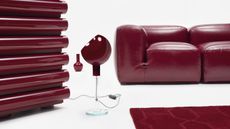 Gucci’s ‘Design Ancora’ reimagines furniture classics in rich red
Gucci’s ‘Design Ancora’ reimagines furniture classics in rich redGucci launches new editions of Italian design icons in an alluring deep red, showcased during Milan Design Week 2024
By Simon Mills Published
-
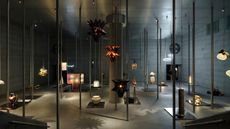 Loewe’s Jonathan Anderson drafts artists to create 24 extraordinary lamps at Milan Design Week 2024
Loewe’s Jonathan Anderson drafts artists to create 24 extraordinary lamps at Milan Design Week 2024Loewe creative director Jonathan Anderson commissioned international artists and artisans to explore ‘illumination within the house’ with a series of lamps and lighting installations, shown at a group exhibition at Milan Design Week 2024
By Scarlett Conlon Published
-
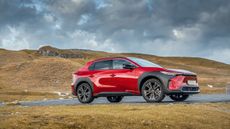 Toyota bz4X SUV is the marque’s first pure electric vehicle
Toyota bz4X SUV is the marque’s first pure electric vehicleThe Toyota bz4X is our first chance to explore how the long-standing masters of mass automobile production make an EV
By Jonathan Bell Published
-
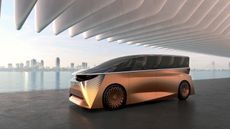 The debut Japan Mobility Show saw the country’s carmakers preview the near future
The debut Japan Mobility Show saw the country’s carmakers preview the near futureThe 2023 Japan Mobility Show offered up a vast array of futuristic transportation, from concept sports cars to autonomous taxis, and eVTOL aircraft
By Jonathan Bell Published
-
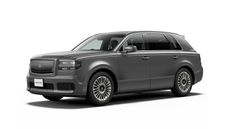 Toyota Century SUV is a new approach to low-key old-school luxury
Toyota Century SUV is a new approach to low-key old-school luxuryThe new hybrid Toyota Century SUV sees the marque take its luxury division to the global market for the first time
By Jonathan Bell Published
-
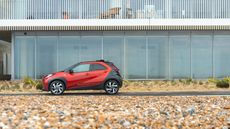 Toyota Aygo X is designed for the rough and tumble of the city
Toyota Aygo X is designed for the rough and tumble of the cityCompact, competent and free from any overheated ego, the Toyota Aygo X is the socially acceptable face of the combustion engine
By Jonathan Bell Published
-
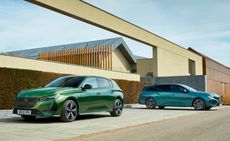 Peugeot’s sparky 308 gets hybrid power and handsome lines
Peugeot’s sparky 308 gets hybrid power and handsome linesThe Peugeot 308 proves that mass-market design needn’t be dull, blending hybrid power with sharp lines and excellent detailing
By Jonathan Bell Published
-
 BMW Motorrad brings out the big guns for its newest cruisers
BMW Motorrad brings out the big guns for its newest cruisersBMW Motorrad R 18 Bagger and Transcontinental set the tone for high-voltage cruising with a brand collaboration with speaker specialist Marshall
By George Chapman Last updated
-
 Dacia’s new Manifesto concept is a true outdoor utility vehicle
Dacia’s new Manifesto concept is a true outdoor utility vehicleUtilitarian auto brand Dacia sets a bold new agenda with its Manifesto, a concept car pitched at the active outdoor market
By Jonathan Bell Last updated
-
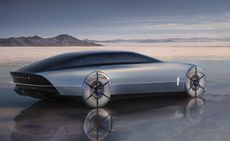 The sun sets on traditional supercars at California’s Monterey Car Week
The sun sets on traditional supercars at California’s Monterey Car WeekMonterey Car Week, the world’s most prestigious car gathering, is showcasing ever-more extravagant special editions, coachbuilt cars and all-new electric concepts. Here are seven key machines from 2022
By Rory FH Smith Last updated